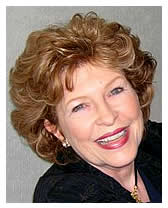
Remember when this vivacious lady was a producer at Jefferson Productions? She was there for about a year, around 1980. At the time, we didn't know Jan Karon was destined to become a world-famous author.


Remember when this vivacious lady was a producer at Jefferson Productions? She was there for about a year, around 1980. At the time, we didn't know Jan Karon was destined to become a world-famous author.
"The working conditions have improved significantly," says Bill Napier, technical operations manager for Jefferson Productions. "This entire reconstruction project was installed with people in mind."
"The working atmosphere is sensational! Everyone is very impressed!" These are the words from General Sales Manager, Lewis Robertson, who feels that the "new" JP constitutes a more creative environment in which to work.
Reno Bailey, operations manager, states that the warm, comfortable decor of the new studios allows JP to do much more for their clients without having to deal with the harsh lights and the sterile atmosphere that rows of machinery can create.
|
|||||||||||||||
| Reno Bailey, left, and Bill Napier in the main editing area. |
All of the above comments point to a main focus of the reconstruction project—creating a better atmosphere for clients as well as employees. Even the technical equipment is arranged so that employees can do their jobs without interfering with the clients' comfort in the lounging area of the studio. As a result, JP keeps its clients from being overwhelmed by all the equipment, while still offering them a way to observe and discuss the work being done.
In addition to the "sensational" working conditions, the reconstruction also added new technical advantages and advances. In the past, JP was operating with old equipment which allowed them to do only one job at a time. Recently, however, JP was able to handle four jobs simultaneously, and even this was not their maximum capacity! With a new studio control room (or editing suite), JP can be very flexible in its scheduling of a variety of jobs.
Another technical advance is that JP can now produce more film opticals electronically. This gives them a good competitive advantage which they did not have before. In the past, a client would have to pay a large amount of money, in addition to waiting several days, just to get a sample of what could be done. Now JP is able to get a film optical sample to clients very quickly so that they can make quick decisions on which production company to choose.
JP has also purchased two new cameras for the studio, and has built a work-area for the production assistants who before had to do their work wherever they could find a spot.
The entire reconstruction project was a task-force decision—many people were involved in the concept. Everything was designed so that expansion is always possible, both physically (within the confines of the building) and electronically.
Take a look at the pictures that Cliff Whitney of JP shared with us—and share in the pride of the "new" Jefferson Productions.
|
|||||||||||||||
| A new Grass Valley switcher with digital effects, beyond which is the computerized editing control, and the audio bay. | |||||||||||||||
|
|||||||||||||||
| The video station where the color, brightness and contrast for the studio's two cameras and tape playback units are controlled. | |||||||||||||||
|
|||||||||||||||
| The client area, where they can relax but are able to converse with the editor. | |||||||||||||||
|
|||||||||||||||
| The dupe room. Material is recorded and edited on one-inch videotape. Dupes are provided on either one-inch or two-inch tape. |
A few months later, work began on another editing facility, EPIC II, in the space vacated by Jefferson Data Services, in the little building just down the hill from the mother ship. It takes a heap of cable and a false floor to get one of these facilities up and going. Ken Helms, left, keeps Tom Elliott working; Bill Napier and Cliff Whitney enjoy the moment.
 |
 |
 |
 |
 |
Photo courtesy Ken Helms.